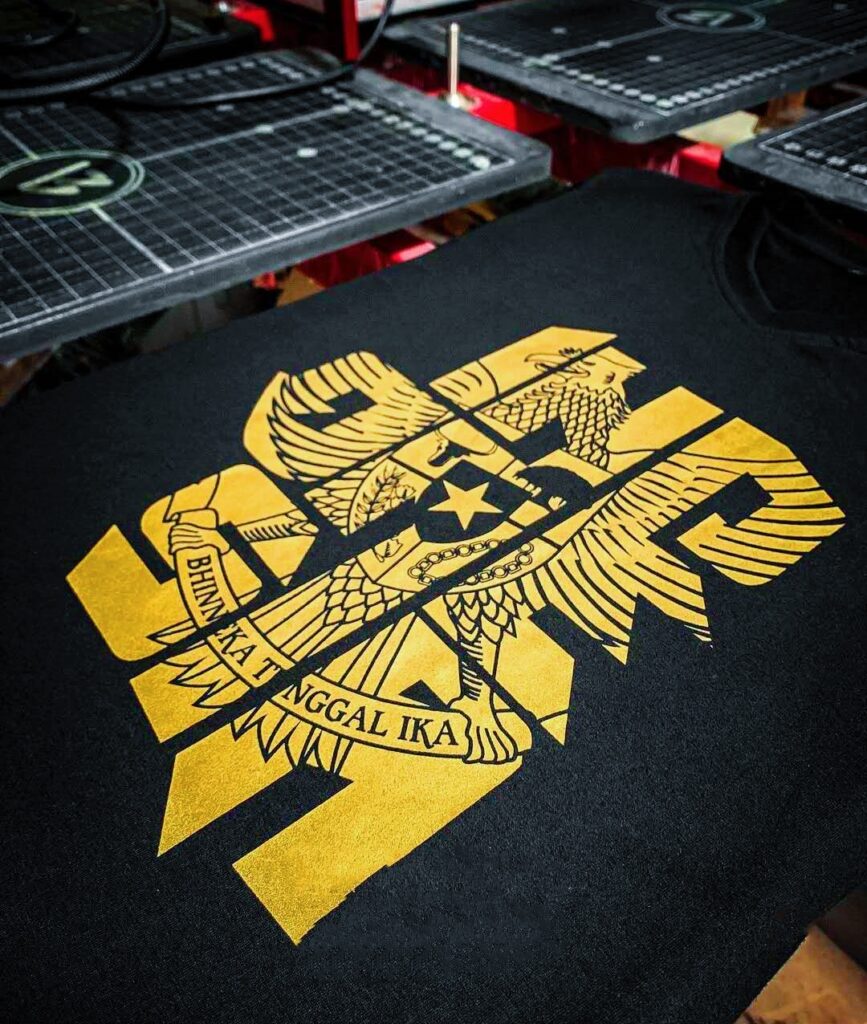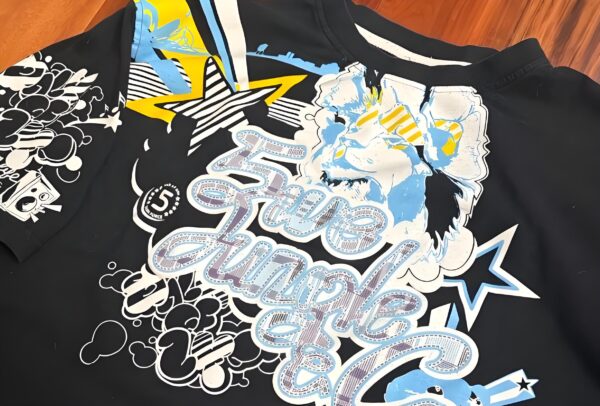Conclusion
Gold Silkscreen Ink is a powerful tool in the world of screen printing, offering both visual appeal and versatility. Whether you’re working with metallic gold silkscreen ink, vegas gold silkscreen ink, or combining it with specialty inks, understanding the techniques for application and curing will help you achieve stunning results. By following the tips and best practices outlined in this guide, you can create bold, luxurious prints that stand the test of time.
Gold Silkscreen Ink: Techniques and Tips for Stunning Prints
Silkscreen printing is a versatile technique that has been used for decades to create vibrant, durable designs on fabric. Among the many types of inks available, Gold Silkscreen Ink stands out as a luxurious and eye-catching option that adds a special touch to any print. Whether you’re creating promotional apparel, fashion-forward designs, or custom items, Gold Silkscreen Ink can help your prints make a bold statement.
In this article, we’ll dive deep into the techniques and tips for using gold screen printing ink effectively, along with an exploration of various other silkscreen inks for fabric, including specialty options like metallic gold silkscreen ink and vegas gold silkscreen ink. We’ll also provide insights into how to achieve the best results using plastisol print and screen printing plastisol int methods.
What is Gold Silkscreen Ink?

Gold Silkscreen Ink is a specialized type of silkscreen ink for fabric that incorporates metallic pigments to create a reflective, shiny finish. This ink is ideal for designs that require a touch of elegance and luxury, making it a popular choice for fashion brands, promotional items, and event merchandise. The metallic properties of gold screen printing ink allow it to stand out on both light and dark fabrics, providing a radiant, high-contrast finish.
Choosing the Right Gold Silkscreen Ink for Your Project
When it comes to selecting Gold Silkscreen Ink, there are a few options available, each with its own unique characteristics and best-use scenarios. Here’s a breakdown of the most common types:
1. Metallic Gold Silkscreen Ink
Metallic gold silkscreen ink is the most common type used for fabric printing. It contains metallic flakes that reflect light, giving the ink a glittery, shimmering appearance. This type of ink is ideal for large, bold designs that need to catch the eye.
Pros:
- Provides a reflective, glittery finish
- Excellent for bold, attention-grabbing designs
- Durable and long-lasting on various fabrics
Cons:
- Not ideal for fine details due to the thick consistency
- Requires a lower mesh screen to allow ink to flow properly
2. Vegas Gold Silkscreen Ink
Vegas gold silkscreen ink offers a subtler gold hue compared to traditional metallic gold. It has a warmer, more muted tone that works well for elegant and understated designs. This ink is particularly popular for collegiate and team apparel where a classic, refined look is desired.
Pros:
- Warm, muted gold tone
- Suitable for both bold and intricate designs
- Pairs well with other metallic inks for layered effects
Cons:
- May not provide as much shimmer as standard metallic gold
- Requires careful application to maintain color consistency
Techniques for Printing with Gold Silkscreen Ink

Using Gold Silkscreen Ink effectively requires proper techniques to ensure the best results. Whether you’re working with metallic gold silkscreen ink or vegas gold silkscreen ink, the following steps will help you achieve stunning prints.
1. Selecting the Right Mesh Count
When printing with gold screen printing ink, selecting the correct mesh count is critical. Since metallic inks contain metallic flakes, they are thicker than standard inks. A lower mesh count (between 110 and 160) is recommended to allow the ink to pass through the screen without clogging. This ensures an even application of the ink and a smooth, reflective finish.
2. Using a Flash Cure Between Layers
If your design involves multiple layers or colors, using a flash cure between each layer is essential to prevent smudging or mixing of colors. Plastisol print inks, including Gold Silkscreen Ink, require heat to cure, and flash curing each layer ensures that the inks set properly before the next layer is applied. This technique is especially important when combining gold silkscreen ink with other specialty inks like reflective screen printing ink or fabric ink screen printing.
3. Achieving Fine Details
While Gold Silkscreen Ink is known for its bold and shiny appearance, achieving fine details can be challenging due to the thickness of the ink. To maintain the integrity of your design, it’s best to avoid intricate, delicate lines with metallic gold ink. Instead, use it for larger, more solid areas of your design and consider pairing it with thinner inks for detailed sections.
Best Practices for Curing Gold Silkscreen Ink

Curing is one of the most important steps when working with gold screen printing ink. Proper curing ensures that the ink bonds to the fabric, creating a durable and long-lasting print.
1. Use the Right Temperature
For screen printing plastisol int with gold screen printing ink, the recommended curing temperature is around 320°F (160°C). This allows the ink to fully bond to the fabric and ensures that the metallic flakes maintain their reflective properties. Under-curing can result in prints that crack, fade, or peel after washing.
2. Test Curing Times
Different fabrics require different curing times, so it’s essential to run test prints before starting a large production run. Fabrics like cotton typically cure faster, while synthetic fabrics may require longer curing times. Always ensure that the fabric is heat-resistant, as some materials can become damaged during the curing process.
3. Avoid Over-Curing
Over-curing Gold Silkscreen Ink can cause the metallic pigments to lose their shine and result in a dull, lackluster finish. To prevent this, monitor the curing process closely and remove the fabric from the heat as soon as the ink reaches the proper temperature.
Combining Gold Silkscreen Ink with Other Specialty Inks
For those looking to create more dynamic and multi-dimensional designs, combining gold screen printing ink with other specialty inks can add depth and visual interest.
1. Layering with Reflective Screen Printing Ink
Layering gold silkscreen ink with reflective screen printing ink can create a dual-effect design that shines in both regular and low-light conditions. The reflective ink catches light in the dark, while the gold screen printing ink provides a luxurious finish during the day.
2. Combining with Puff Ink Screen Printing
Puff ink screen printing creates a raised, three-dimensional effect that can be combined with Gold Silkscreen Ink to add texture to your designs. The puff ink expands when cured, providing a tactile, embossed feel, while the gold ink adds a metallic sheen to the raised areas.
3. Glow in the Dark Overlays
For a truly unique effect, apply a layer of glow in the dark screen printing ink over your gold screen printing ink design. This allows your design to shine during the day with the gold finish and glow at night, making it perfect for event merchandise or limited-edition apparel.
Advantages of Using Gold Silkscreen Ink
Gold Silkscreen Ink offers a range of benefits for both fashion and promotional printing. Its versatility and eye-catching appearance make it a go-to option for designers looking to elevate their prints.
1. Luxurious and High-Impact Design
Gold Silkscreen Ink creates a luxurious, premium look that stands out from traditional ink finishes. Whether you’re designing for high-end fashion or promotional products, the shiny, metallic finish adds an extra layer of sophistication to any print.
2. Durability
When properly cured, gold screen printing ink is highly durable, maintaining its vibrant finish even after multiple washes. This makes it ideal for garments that will see frequent use, such as team apparel or branded merchandise.
3. Versatility
gold screen printing ink can be applied to a wide range of fabrics, from cotton to synthetic blends, making it a versatile option for different types of projects. It can also be combined with other specialty inks to create unique, multi-layered designs.









